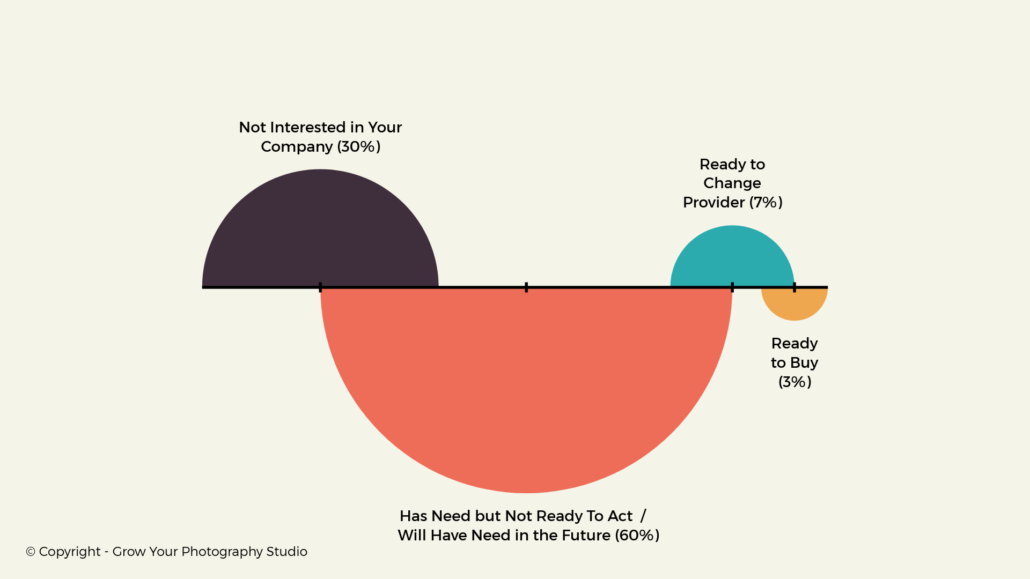You know?
The one rushing through questions nobody is interested in, in the first place, just to get to the point where you leave the bar together.
Except, you can clearly see through it. And that’s why it feels gross.
Or like a ridiculous waste of time if, after all, you would not mind being asked out.
But what’s this got to do with marketing?
What makes marketing feel gross – like some dates – is not having an “agenda” (getting the sale), but trying to hide it.
WHEN HATING MARKETING IS INEVITABLE
What’s even worse, is that we don’t realise how this approach makes marketing feel gross not only for our clients… but also for ourselves.
Marketing with a hidden agenda is that feeling you get when you tell a lead “I only have two spaces left, make sure you don’t miss out” when the only appointment in your diary is your best friend’s birthday.
Is that “I hate writing” you feel in your core, when writing for marketing is reduced to “what can I write that’s gonna get me likes and enquiries right away so I don’t feel totally invisible?”.
At the core of this, there is the idea that being good means convincing people. Means getting them to say yes.
Yes, book me in. I don’t really know if you are the right one but I don’t want to miss out.
Yes, I’ll buy wall art. That new phone. That car. That course. I’ll regret it, but there we go – you have convinced me.
And it makes sense, because “yes” feels good. It feels like a win. It feels like money.
“No”, on the other hand, feels like… rejection.
A GOOD FIT?
Here’s the thing.
In business, same as in your personal life, going out with the wrong person has consequences.
If you are lucky, you’ll only end up hating your dinner and how uncomfortable, even awkward, the evening felt.
But even if that’s not the case, rest assured you’ll regret that yes. Maybe even months down the line.
Maybe, you won’t even be aware of the consequences.
A bad review (for your studio, that is), or simply a bunch of clients who “would not really recommend” you.
So what if marketing was not about getting people to say yes, but about making it easy for people to decide whether we are a “yes” or a “no” to them?
What if marketing was not about finding our ideal client, but about making sure who we are is so clear that it’s easy for them to recognise us? (More on the relation between “who you are” and your brand here).
FILTERING vs CONVERTING
Ok, but that’s just theory – how do we put all of this into practice?
Let’s start with a simple excercise: let’s write something that will resonate with your ideal client, and repel your “nightmare” client
STEP 1 – YOUR “HELL NO”
Think about enquiries and questions you have received in the last few months.
Think about those that raise all of your alarm bells.
Could be people sending you a one line email that looks like “hi i’m interested in a baby session can you give me prices tx”. You know the one.
Could be someone sending you 30 images of babies in props, asking if you can do the same, when not a trace of a prop can be found on your pages.
Or maybe, simply, you don’t want to deal with any more “oh we are just looking for a few digitals”. To the point where reading that sentence would make you go “I’m fully booked”.
Choose one of these alarm-bell-raising questions and write it down.
STEP 2 – THE MUST-HAVES
Now think about something that for you is a non-negotiable, something that must be true for a client to be a good fit.
Could be… liking deep, rich colours.
Or liking posed images because you don’t do lifestyle.
Again, choose one non-negotiable and write it down.
STEP 3 – LET’S WRITE
Now, the easy part.
- Take your “must-have” and turn it into a sentence that sounds like: If you love [must have] you will love a session with me.
For example:
If you love a rich, deep colour over any “baby pink”, you will love a session at [studio name].
If you love the idea of natural, unposed images of your newborn baby, a session with me is exactly what you are looking for.
- Take your “hell no” and list it in a “we might not be a good fit if” sentence.
For example:
If you are only looking for a couple of digital images, we might not be a good fit. Although there is no obligation to purchase when you come for your viewing appointment, from the moment you enquire we will work to create a stunning gallery of minimum 20 images of your baby and most of my packages offer the best savings when you buy all of them.
STEP 4 – PRACTICE!
Use these sentences on your homepage or first reply to an enquiry.
FEELING SCARED?
If you have followed me until here, you probably felt good about the “if you love” sentence.
And terrified by the “hell no” one, because that will make people say no.
And “no” means losing a sale.
No means rejection.
But in the end, it all comes down to this: creating a business we love and that feels beautiful requires awareness of who we are, and what we want, and the courage of leaving behind whatever is not gonna get there.
Hi, I am Giulia (weird, uh? It sounds like Julia – but it’s written with a “Gi”) and I am the founder of Grow Your Photography Studio.
I am known for my no-BS, hands-on approach to helping newborn photographers get more clients and grow a business they actually enjoy running. I believe marketing should not be a “necessary evil” and that taking action is the first and most fundamental step toward success.
Feeling on the brink of burnout? Read our guide “Photographers on the brink of burnout“
Thinking about our Marketing Mentoring programme? Read this first

